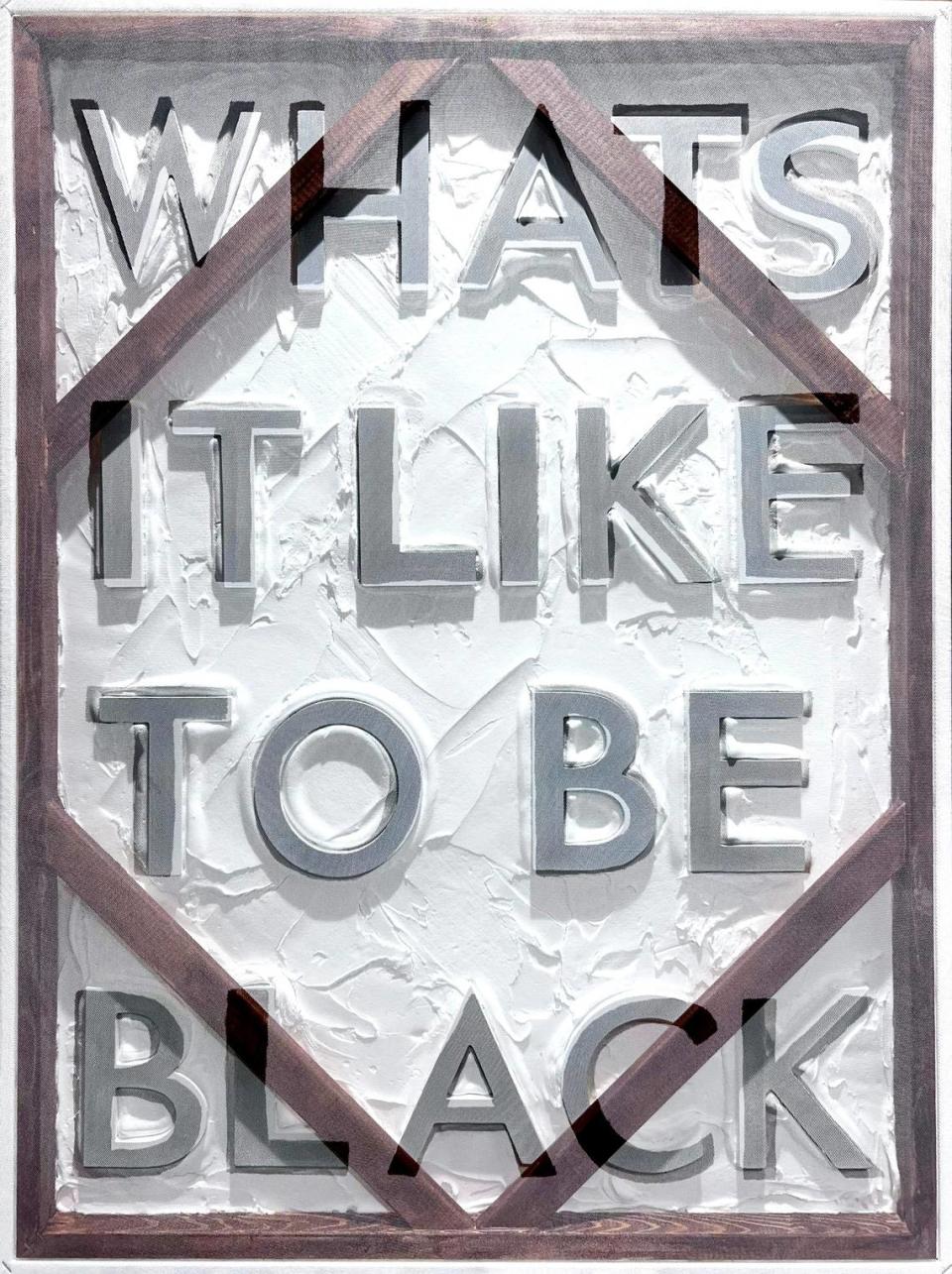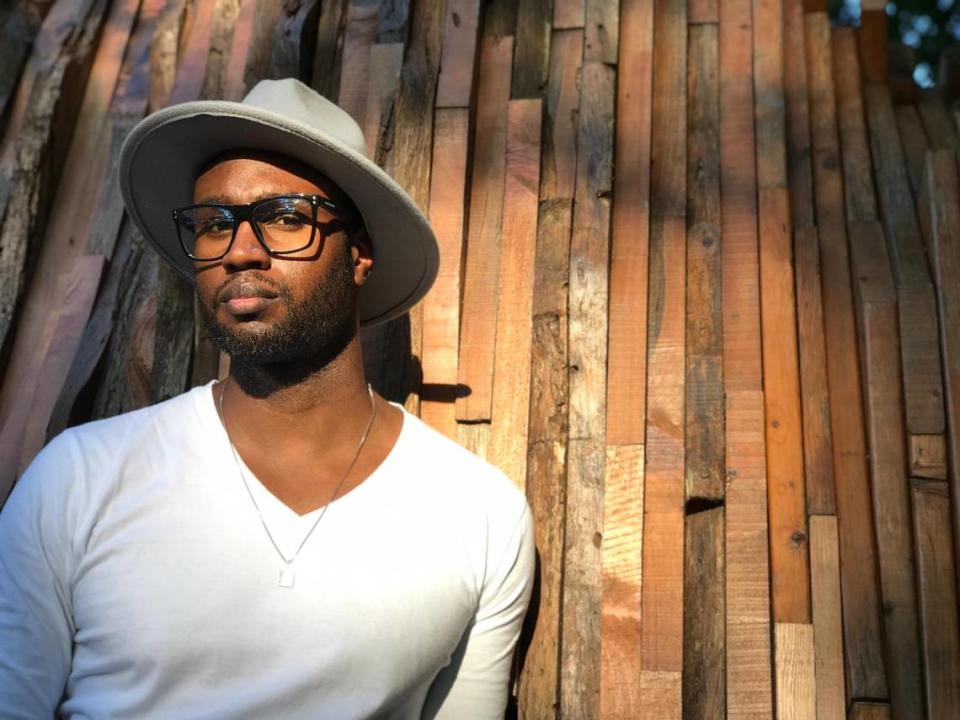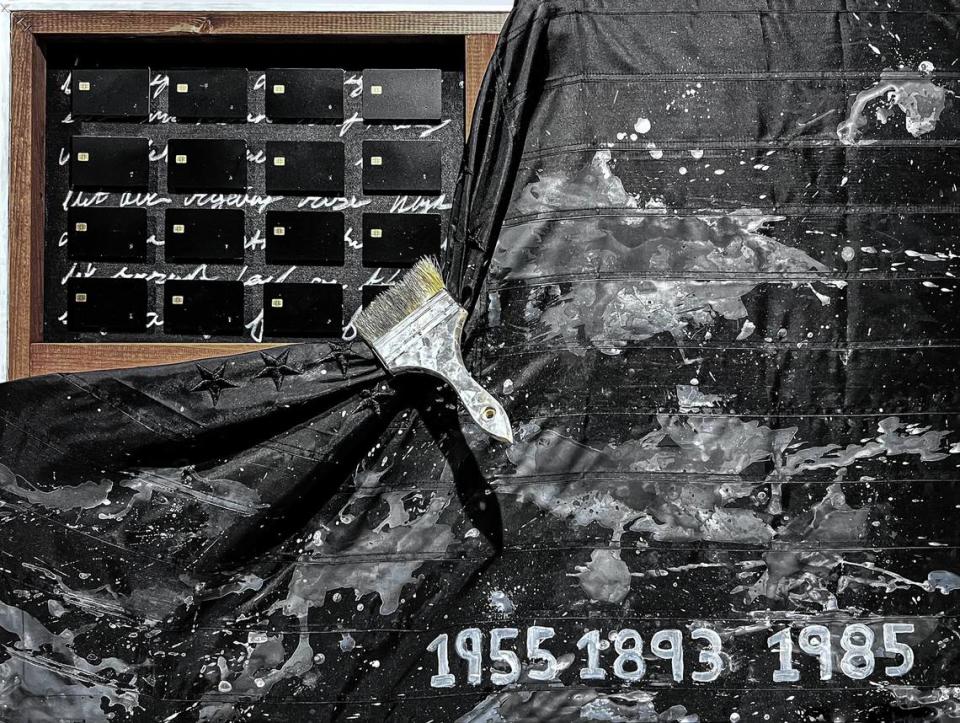‘What’s it like to be Black:’ A conversation about Blackness and making voices heard
The notion of the “Black Card” has permeated popular culture, often serving as a humorous reference. However, its meaning and representation as a marker of racial authenticity have raised questions.
Artist Brandon Clarke also shares these concerns, which led him to create ”BLACK Card: Transactions of Cultural Currency.” The exhibition is on display through Aug. 31 at the Historic Ward Rooming House in Overtown.
“We curated this show to have a conversation about authenticity and access within our own community and outside our community,” says Clarke. “As we continue to make our Black voices known in America and around the world, we demand a seat at the table.”

Delving into the intricacies of authenticity, access, and identity within the Black community, Clarke’s idea is to challenge societal perceptions and to shed light on the significance of the symbolic “Black Card” as a representation of cultural validation.
“My vision is not only to get our seat at the table, but we can sustain our seat at the table?” What good is wealth if you cannot sustain it for generations to come? I feel to help accomplish this alongside the strides we have already made requires a level of cultural sustainability within ourselves. The Black card became the perfect catalyst to represent much of what we are fighting for and against.”
The concept of the “Black Card” is not exclusive to the Black community but extends to various cultural groups. “Cuban Card,” “Haitian Card,” or “Jewish Card” are also figurative cards acting as signifiers of belonging and granting access to these specific cultures or communities.
In the Black community, some people have had their black card “revoked” because they have never seen TV series “The Wire,” the movie “Friday,” because they don’t like collard greens or sweet potato pie, or because they do enjoy pumpkin spice lattes.

Facing his own questions of Blackness
Born in California, Clarke’s family moved when he was 8 years old to Lewes, Delaware, what he calls a beach community. He attended Cape Henlopen High School.
Because he didn’t grow up in a Black community or attended a majority Black school until he went to a historically Black college (Hampton University in Virginia), he says he faced challenges to his own authenticity, with people questioning his Blackness due to engaging in activities that did not align with certain stereotypes.
“Oftentimes people question your authenticity when your experiences are different from theirs,” he says. “Sometimes, someone can lose his Black card, not because of what he may not know about the culture, but what activities he participated in.”
He says he surfed, snowboarded and skateboarded — activities that he enjoyed.
“But people often questioned my Blackness because of it. Growing up I found out that a lot more Black people like myself had the same experiences.”
Reflecting on the level of Blackness, the Miami-based artist acknowledges that he is not sure “what the bar is.” However, he firmly believes that being Black in America is a precious gift, a tribute to the courageous legacy of his ancestors who faced countless limitations.
Quoting Christopher Norwood of Hampton Art Lovers, who co-curated and commissioned the show, the artist states, “As we expand our horizons and what it means to be Black in America, our ancestors expand their smiles.”
To explore the concept of the Black Card in his artwork, Clarke obtained a collection of black credit cards, which became the focal point of his creative expression. Some pieces portray the physical black credit card embedded within paintings, while others take a metaphorical approach, symbolizing transactions across various spaces, including marketing, social interactions, and economic evaluations.
“Our Blackness just doesn’t reach within our own community, but it stretches out the borders of who we are within this nation and even internationally,” says Clarke.
In deconstructing the idea of the Black Card as a euphemism for Black identity, the South Dade artist views it as a tool designed to confine individuals to predefined notions of Blackness.
Looking beyond music, sports
“The Black Card ultimately does not exist, it’s a tool to keep you in a box. But cultural currency is real, and we need to harness our culture and respect it as an economic tool for development,” proposes the artist. “Black culture absolutely drives the music business and sports, no one would argue with that statement. But the potential of our culture could also drive and revolutionize math and science as well.”
Clarke firmly establishes a connection between the symbolic Black Card and its real-life counterpart in the realm of credit and currency. He identifies the Black Card as the ultimate symbol of luxury and access, paralleling it with the value and global influence of Black culture, which has been at the forefront of defining “Cool” since the Harlem Renaissance.
Hampton Art Lovers, the organizers of the event, have played a crucial role in presenting Clarke’s artwork. The collaboration between the artist and the gallery stems from a shared love for Black art and a belief in its power to tell meaningful stories. With their mentorship and support, Clarke says he was able to develop the “Black Card” concept and transform it into this new installation.
“Chris (Norwood) and I began talking frequently. I pitched several concepts to him. We discussed them all and played them out visually. We scrapped most of them, but one of them was ‘Black Card’ and it felt personal to me in ways that the others didn’t. . . According to Chris, ‘Every great pitcher needs and even better catcher’ and on that day he caught ‘Black Card. and threw it back to me and said run with it.”

If you go
WHAT: “BLACK Card: Transactions of Cultural Currency”
WHERE: Hampton Art Lovers at Historic Ward Rooming House, 249 NW 29th St., Miami
WHEN: Runs through Aug. 31.
COST: Free
INFORMATION: hamptonartlovers.com
ArtburstMiami.com is a nonprofit source of dance, visual arts, music, and performing arts news. Sign up for our newsletter and never miss a story.

